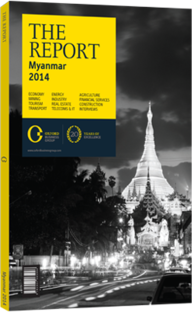OBG talks to Ross Cormack, CEO, Ooredoo Myanmar

Interview: Ross Cormack
What were the deciding factors in the decision to enter Myanmar’s market, and how does the country differ from other emerging economies?
ROSS CORMACK: This country is the last telecoms frontier and certainly the most attractive. Penetration is currently very low, so there is a significant opportunity, but, more importantly, the government is clear on what it wants to do for the future. It has a bold vision of leapfrogging bottlenecks. Its goals and ambitions are all about taking Myanmar back to its rightful position in the world, which used to be the “Jewel of Asia”, and we want to help return the country to this status.
Although all nations are unique, what makes Myanmar different in this capacity is all the parallel development opportunities rapidly taking place at the same time, and to which telecommunications will have an important role in facilitating.
How can local small and medium-sized enterprises (SMEs) help build Myanmar’s telecoms industry?
CORMACK: We will actively promote the development of a vibrant mobile phone sector and have pledged to create many opportunities for local businesses. This includes partnerships to accelerate the scale of development that the telecoms industry will face over the coming years, as well as to collaborate with in-country partners. We expect that Myanmar’s SME segment will play a pivotal role through utilising local expertise and knowledge, particularly in areas of distribution, content and apps development, and call centre activities.
What priorities have been identified to help develop the country’s ICT infrastructure?
CORMACK: Myanmar has never seen infrastructure roll-out on this scale before. Given the size and diversity of the country, a clear priority is to build and invest in infrastructure capable of servicing all of Myanmar in the long term, while ensuring that the network is adaptable, for example, to handle an upgrade to 4G. We will invest in a national fibre backbone with a view to enhancing, and collaborating with, the existing Myanmar Posts and Telecommunications infrastructure.
We have committed to launching our services within six months of the effective licence date, and upon inauguration we expect our services to be available in the key main cities, expanding quickly to include rural areas and more remote communities.
As a community-focused organisation, our commitment and priorities go beyond the creation of infrastructure. The development of local talent is important, and we will promote the transfer of know-how and expertise and ensure that the vast majority of our staff are Burmese. We are ultimately committed to enriching people’s lives and enabling human growth.
Myanmar will continue to grow over the coming years. To encourage this we must focus on bringing economic empowerment and social development, while also being mindful of the environmental implications which surround the implementation of our operations.
What strategies are in place to ensure that mobile penetration and 3G coverage reaches 35-40% of the population in the first year of operations?
CORMACK: The biggest challenge of the tender was providing fast and affordable coverage, which we translated into 3G geographic coverage of 85% of this huge country within a few years after its launch.
We have established a collaborative strategy to help us achieve these ambitious targets and to develop a high quality and next generation network in Myanmar.
Working in partnership wi th other industry partners with proven track records will allow us to provide low cost smartphones and meet the promise to provide SIM cards at a retail price rather than a black market price.
By doing this we will be supporting the country in its path to economic development. By leveraging our experience and best practice across all of our operations in Asia, we can also attract the best local talent to work with us. Looking back five years from now is going to be very exciting; we will not believe the changes.
You have reached the limit of premium articles you can view for free.
Choose from the options below to purchase print or digital editions of our Reports. You can also purchase a website subscription giving you unlimited access to all of our Reports online for 12 months.
If you have already purchased this Report or have a website subscription, please login to continue.

